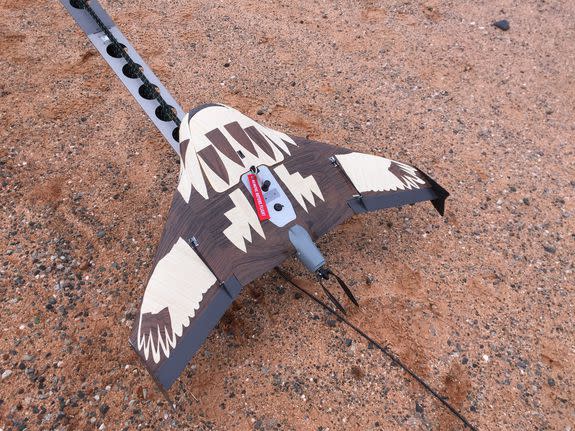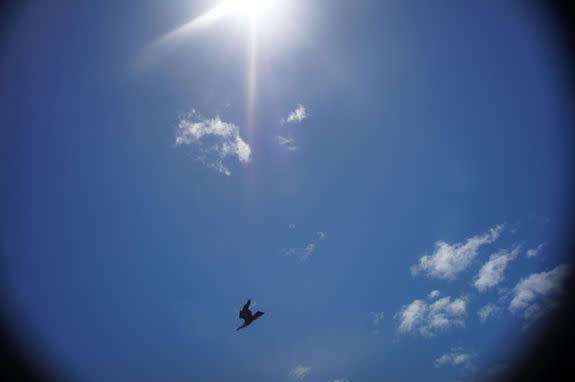Eagles are waging war against drones, knocking them out of the sky

While we all look forward to the prospect of pizza being delivered by drones, not everyone is loving the flying gadgets. Birds of prey don't particularly like them. At all.
Surveyor Rick Steven, has had to contend with some angsty local eagles while flying his unmanned aerial vehicles (UAVs) at the St Ives mine, located in Western Australia's Goldfields region.
In short, they're destroying them, and it's forcing Steven to get inventive.
SEE ALSO: Can a drone rake leaves?
The UAVs have assisted Steven in creating 3D models of mined areas, as well as helping workers avoid extreme weather conditions on surveys.
But the pesky eagles have been taking down their drone-y mortal enemies, because they're seen as a threat.
"Eagles are extremely territorial birds," Steven told Mashable. "Seeing a UAV in the sky, obviously they consider it a threat and something that's encroaching on their territory."
On the advice from a birds of prey rehabilitation centre, Steven's team were told to camouflage the drone so that it would look like a juvenile eagle.

Image: rick steven
"Eagles would let it pass, and not see it as a threat," he explained. The solution worked for about 50 flights, but then the wedge-tailed eagles figured out that the drones were no baby eagles.
They started being taken down again, falling "like a rock" to the ground.
These are no off-the-shelf consumer drones either: The UAV themselves cost roughly A$10,000 (US$7,391) each as does the camera that's attached to them.
So Steven stopped camouflaging the drones, and instead tried to pick a time where the eagle would not be in the air.

Image: rick steven
"I know the eagle loves to fly on thermals. Because they're a big heavy bird, and the more thermal activity there is, the easy it is for them to fly. Thermals activate during the hottest part of the day — which is why we're flying first thing in the morning now," he explained.
"That's been really successful. So if we fly first thing, say 6:30 a.m., we can get our flight done. Modus operandi on site; if I see an eagle in the air, I call off the flight."
For future commercial drone operators that happen to be sharing the air with a watchful eagle, you have been warned.
[H/T ABC News]

 Yahoo News
Yahoo News 